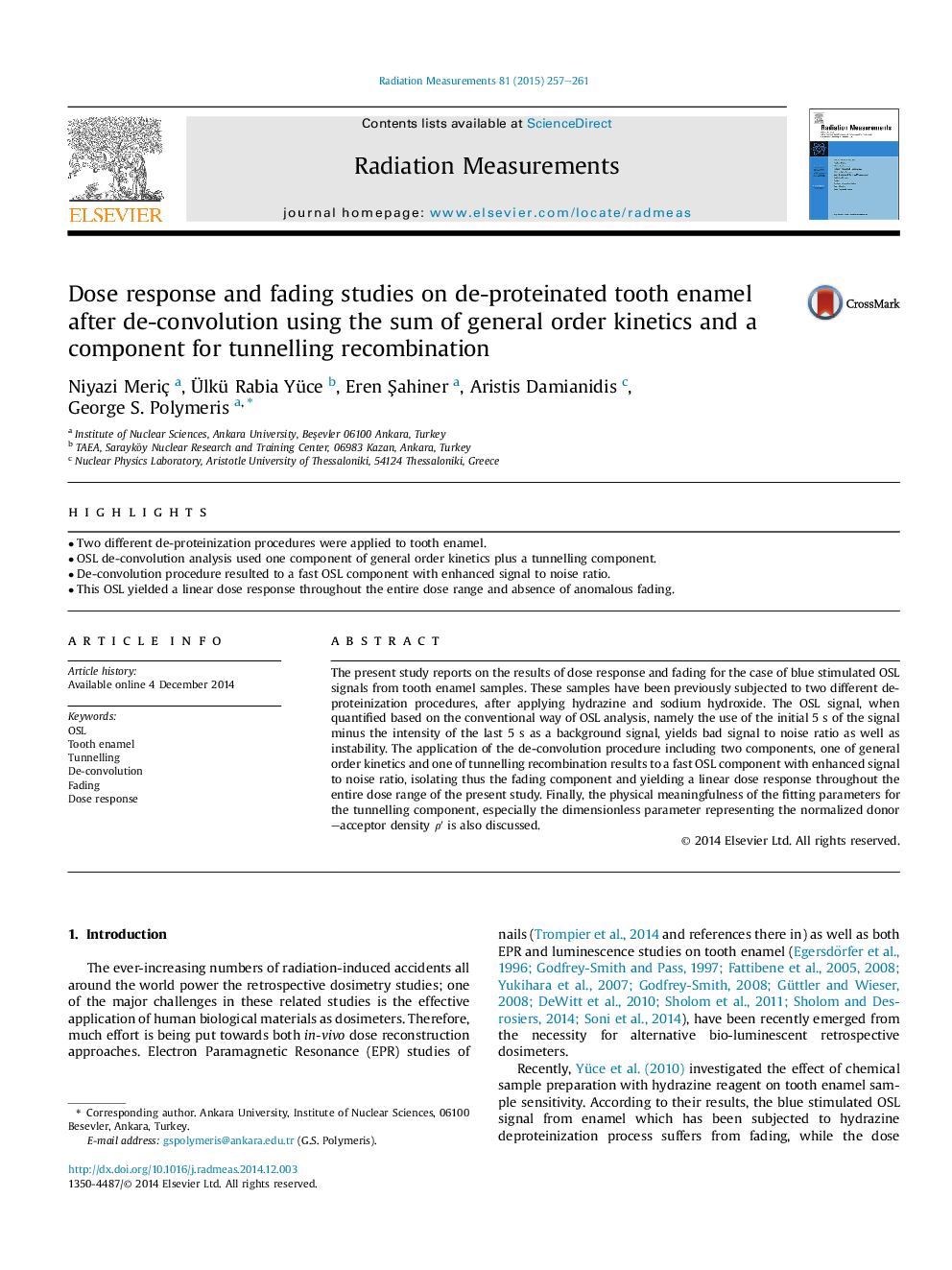| Article ID | Journal | Published Year | Pages | File Type |
|---|---|---|---|---|
| 1883284 | Radiation Measurements | 2015 | 5 Pages |
•Two different de-proteinization procedures were applied to tooth enamel.•OSL de-convolution analysis used one component of general order kinetics plus a tunnelling component.•De-convolution procedure resulted to a fast OSL component with enhanced signal to noise ratio.•This OSL yielded a linear dose response throughout the entire dose range and absence of anomalous fading.
The present study reports on the results of dose response and fading for the case of blue stimulated OSL signals from tooth enamel samples. These samples have been previously subjected to two different de-proteinization procedures, after applying hydrazine and sodium hydroxide. The OSL signal, when quantified based on the conventional way of OSL analysis, namely the use of the initial 5 s of the signal minus the intensity of the last 5 s as a background signal, yields bad signal to noise ratio as well as instability. The application of the de-convolution procedure including two components, one of general order kinetics and one of tunnelling recombination results to a fast OSL component with enhanced signal to noise ratio, isolating thus the fading component and yielding a linear dose response throughout the entire dose range of the present study. Finally, the physical meaningfulness of the fitting parameters for the tunnelling component, especially the dimensionless parameter representing the normalized donor–acceptor density ρ′ is also discussed.
